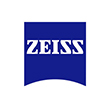Mobile optical 3D coordinate measuring technology is used for quality assurance on the production line in the BMW Regensburg plant. For the assembly of roof modules for convertibles, optical measuring equipment is used in process planning for the machine capability study (MCS) even before the start of serial production. On the assembly line the photogrammetric system then enables flexible inspection to be carried out during manufacture. Thus trends and deviations in production can be detected at an early stage. As result of using optical metrology rework time is reduced and production costs are cut down significantly. Also Quality Management can be specifically improved by means of process capability studies.
Volkswagen pursues accident research. Numerous accident statistics and local accident surveys have been analyzed statistically to gain knowledge of the accident event. The goal is to improve vehicle safety.
In recent years, the complexity of parts in the plastics processing industry has increased, generating high demand for the development and use of new metrology procedures to optimize the complete process chain in industrial environments. Standards in quality assurance are now set by threedimensional optical measurement technologies such as those developed, manufactured and distributed by GOM (Gesellschaftfür Optische Messtechnik) of Braunschweig, Germany, one of the world’s leading providers of 3D metrology solutions.
The ATOS 3D digitizer, for full-field measurements of surfaces, is utilized world-wide in the injection-molding and plastic-processing industry for form and dimension inspection of injection-molded parts. Due to the 3D full-field color deviation plot, the evaluation of parts is considerably faster and much more efficient compared to conventional measuring methods. In particular, warpage and shrinkage of injection-molded parts are fast and clearly displayed speeding up mold try-out and production control. Thus, the ATOS technology allows companies to keep pace with shorter product cycles and faster lead times.
Fuel tanks for cars are typically manufactured using plastic blow molding. To verify the production parameters and optimize the production, the digitizer ATOS II was used. 10 samples were taken out of two production lines with 20 minutes digitizing time for each part. The parameters which were monitored and validated were the production line, the cooling water (temperature and flow), the object temperature before digitizing and the influence of a special process step.
Already before the first article inspection (FAI) of the casting, 3-D shape and dimensional analyses provide reliable information for quality control and targeted process optimization. Foundries and forging shops the world over use the ATOS 3-D digitizer from GOM mbH, Braunschweig/Germany, for surface measurements in shape and dimensional control of patterns, sand cores and castings. GOM also offers inspection software, training and support – all from a single source. Longstanding users above all appreciate GOM´s integrated solutions of non-contact and tactile measuring within one system.
Already before the first article inspection (FAI) of the casting, 3-D shape and dimensional analyses provide reliable information for quality control and targeted process optimization. Foundries and forging shops the world over use the ATOS 3-D digitizer from GOM mbH, Braunschweig/Germany, for surface measurements in shape and dimensional control of patterns, sand cores and castings. GOM also offers inspection software, training and support – all from a single source. Longstanding users above all appreciate GOM´s integrated solutions of non-contact and tactile measuring within one system.
Dimensional analysis of the prototype molds was conducted with the aid of an ATOS Triple Scan optical 3-D digitizing scanner equipped for blue light scanning (blue light permits accurate measurements regardless of ambient light conditions), supplied by Capture 3D (Costa Mesa, Calif.) and developed by GOM mbH (Braunschweig, Germany). Scanner feedback guided development of the multicavity production molds, optimizing dimensional results while eliminating tuning loops.
In automotive production, the individual parts are held in fixtures during mounting and are combined such that precise components and assemblies result. When using large body sheet metals that are not stable themselves, it is particularly important that the fixture forces the sheet metal into the correct shape. Thus, solid welding and rebated joints can be produced and the shape of the assemblies complies with the specifications. In production, Ford uses 60 welding fixtures in the production chain for the right and also for the left side panel. These so-called jigs can be adjusted for holding and clamping the side panel of the 3 and 5 door Ford Fiesta and the Ford Fusion.
Quality assurance and management are growing in importance in industrial development and production. The decentralized production of components by suppliers mean that tight specifications have to be meet to ensure problem-free assembly in final production, resulting in a high-quality final product. As such, optical digitizing systems have become firmly established for inspection of individual sheets, in assembly analysis, and during forming tool try out.

